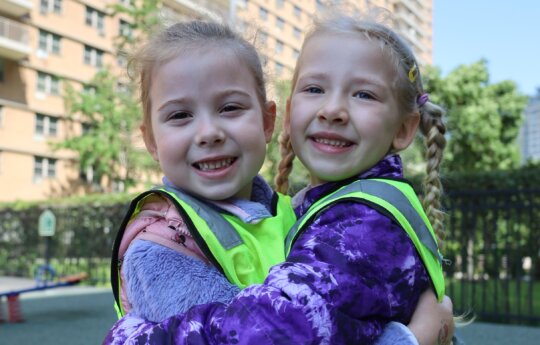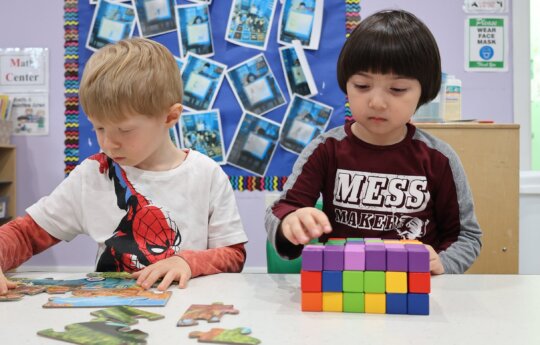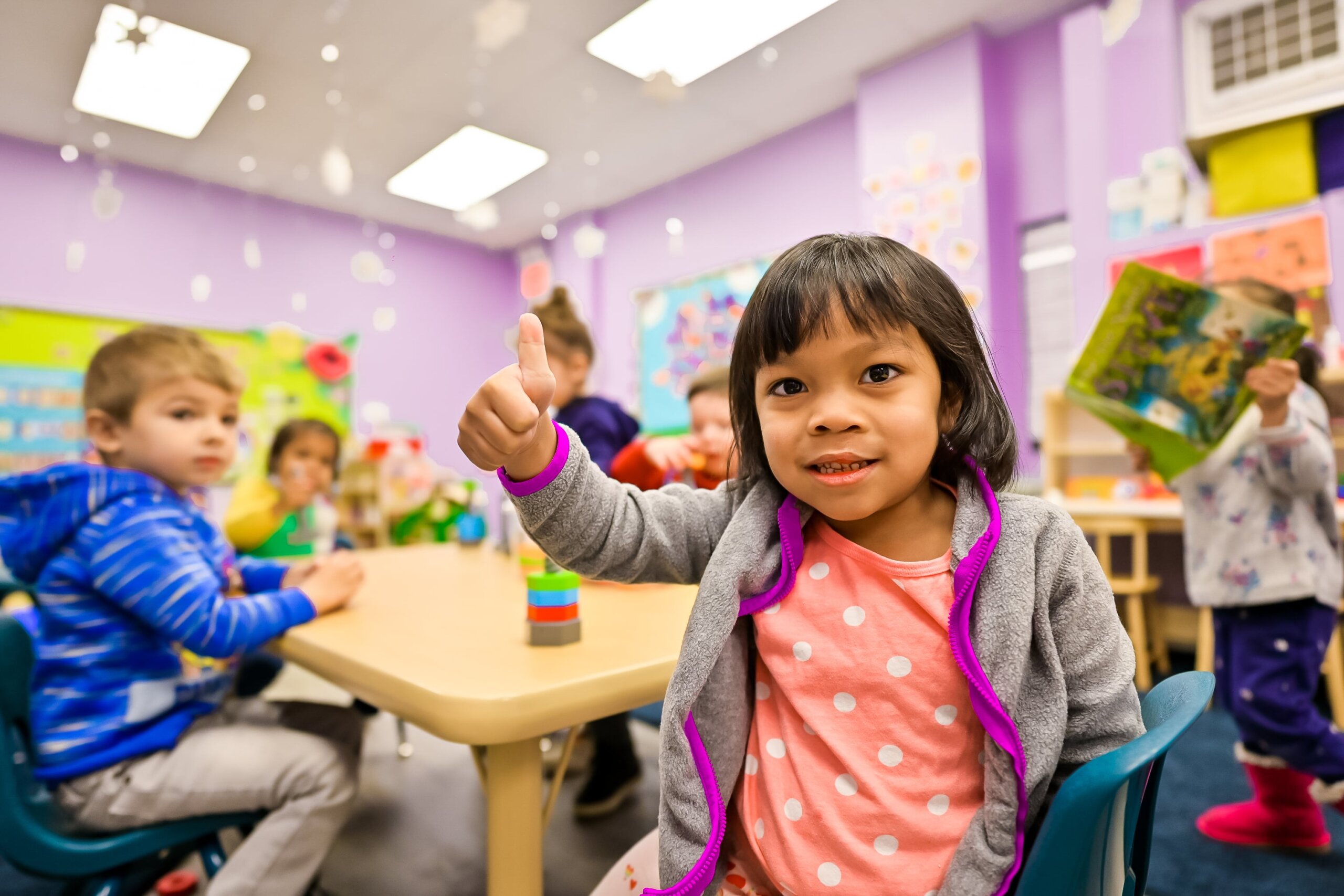
Undoubtedly, for most children and parents, starting a daycare is a major milestone they must pass across. It marks the first time that a child will definitely spend large chunks of time away from home and with people other than family. Naturally, this provokes a wide range of reactions, from excitement and anticipation to anxiety and dread. For the former, the daycare environment means a new, potentially fun routine, new faces, and a novel atmosphere. For the latter, the prospects of the child’s absence can lead to feelings of guilt, worry, or relief on the parent’s part.
Thus, it is clear that the Transition to Daycare is a significant event in the life of both the child and the parents. The smoothness of such a transition between the child and the Daycare system cannot be underestimated, as a gentle and well-managed one can set a rich array of subsequent impressions and responses to any future separation.
Transition for Different Ages
The transition to daycare differs depending on how old a child is. That is, the challenges a parent faces while doing so and the nature of their relationships with the child or other children in the case of older preschoolers are different. Therefore, it is important to recognize the particularities of the process for different ages of children and how to address them.
Transition to daycare at 4 months
At four months of age, an infant is mainly becoming accustomed to the environment. Transition to daycare implies knowing the unfamiliar individuals and getting along with the caregivers. This will depend on how well these people can create a comfortable and understanding atmosphere for the baby.
Transition to daycare at 6 months
At the age of six months, the baby is more accustomed to the environment and can recognize known people from the unknown. The transition to daycare at this age can possibly cause the feeling of being separated away from known persons, which might mainly cause post-traumatic stress disorders for the parent. Hence, it would be better to introduce separate drop-offs for the children to let them understand that they will return to pick up after a couple of hours.
Transition to daycare at 12 months
At one year, children may be affected by separation anxiety, and they are able to differentiate their parents from the caretaker. They need a daycare provider in the vicinity of the baby’s presence either at the home or take the child to the facility, and this process can be taught through smaller visits that take a very short period before the 1-year infant starts learning in the facility full time.
Transition to daycare at 18 months
At one and one-half years, the infants are always ready to adapt to the new environment. However, they will also resist separation from their parents by shouting or crying as they are being separated. Thus, for such children, it is also best to undertake a short period visit, which is also recurrent and follow it to give a notice that the new people and place they are at are nice.
Transition to daycare for 2-year-old
At two years of age, children will always seek explanations and be able to engage in some conversations. The explanation should involve a lot of appreciation and the day with the infant before the parent goes to work. Introducing the ideas of the daycare will also inform the baby that they will be together soon and assured that it will be fun.
Transition to daycare for 3-year-old
A 3-year-old can be told to go home after completing their school day. In this special age, they will always like to make others and new friends happy and have a desire to learn a lot of new things. Parents should support this kind of behavior and happiness and teach them their day is important.
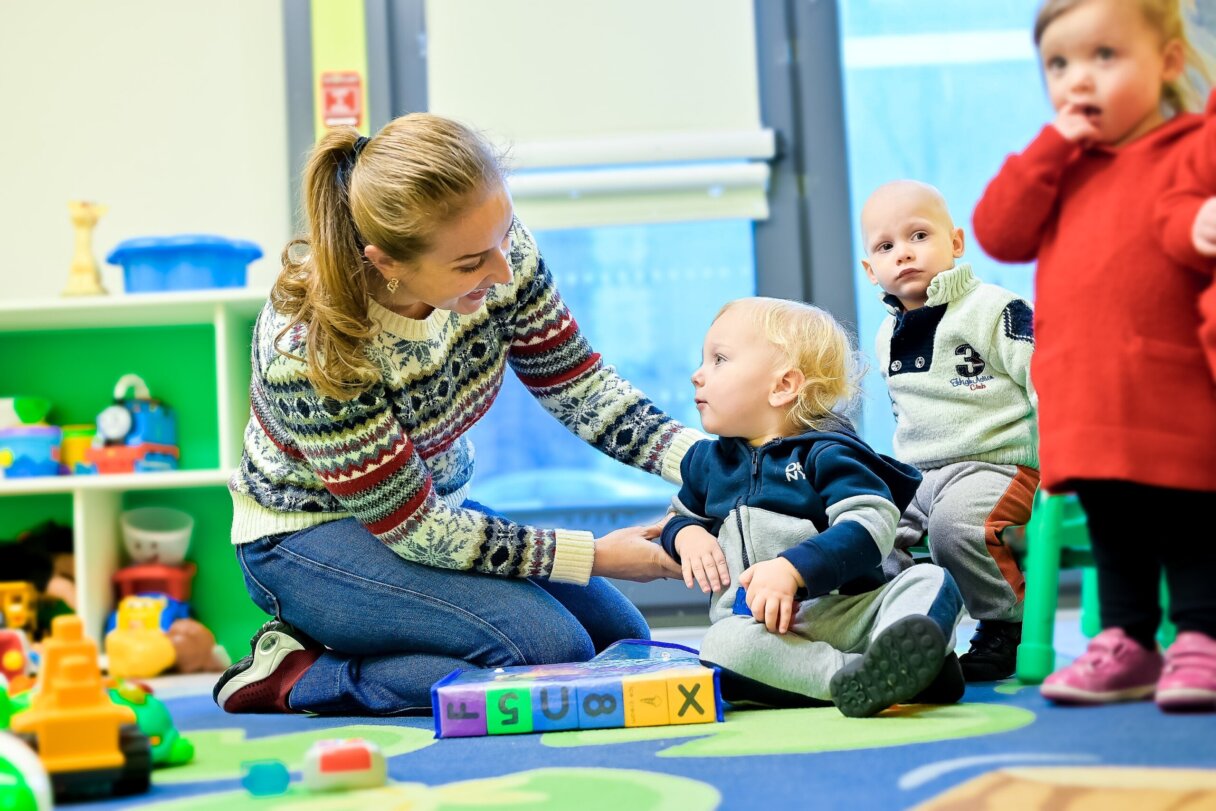
Psychological and Emotional Aspects
These stages are connected with overcoming separation anxiety, establishing trust with new people, and adapting to a social environment beyond the family.
As for the first stage, the emphasis is placed on sensory trust and security from new people.
As for the second period, the main task is to work on issues of autonomy and overcoming fears of separation. In addition, at both stages, it is important that parents and educators provide special care and support and consistently follow the same pattern.
Positive reinforcement and smoothness of the process, as well as open communication, can contribute to the overall positive experience holding children’s emotions and, ultimately a sense of security, which will ensure their good adaptation.
How to Make Daycare Transition Easier
Gradual Introduction
Tips on Visiting the Daycare with Your Child Before the Official Start:
- Schedule several visits with your child before they begin at the daycare. These can be of different lengths and can help your child adjust to the new place.
- During the visits, smile and stay cheerful. Your child will feel more secure and happy than if you do not feel good about the situation.
- Allow your child to meet the staff of the daycare. This will help both you and the child to get experienced with the new situation and to feel more comfortable with the parent team.
- Walk around the daycare’s premises with your child. This will make the child feel more secure when they enter the new place.
The Value of Familiarizing the Child with the New Environment and Daycare Staff:
- Helps children feel less anxious about the unknown
- Makes them more confident in new circumstances
- Aids in building a relationship based on trust between the child and the parents, who both know the daycare staff personally
- Results in a secure attachment between the children, parents, and daycare workers
- Facilitates children’s smoother transitions between their families and the childcare centers.
Establishing a Routine
How to Set a Consistent Daily Routine That Aligns with the Daycare Schedule:
- The first is to begin early: implement the daycare’s daily routine at home a few weeks before you start, which means readjusting meal, nap, and play times to match the daycare’s schedule.
- The second is consistency: keep the routine consistent every day; through this, children learn to understand better what will happen next. Consistency also means a daily schedule will contribute to reducing anxiety and resistance.
The Role of Routines in Easing Anxiety and Creating Predictability for the Child:
- Security Through Predictability: Routines provide a sense of control and predictability in a child’s life, which can mitigate feelings of anxiety about being in a new environment.
- Eases Transitions: Regular routines can help a child transition from one activity to another with less resistance, knowing what to expect helps them feel safer and more secure.
Emotional Preparation
Strategies to Discuss Daycare Positively at Home to Build Excitement and Reduce Fears:
- Discuss daytime activities: Make it a routine to discuss the activities that your child will engage in while at daycare. Ensure to stress the fun aspects such as playing with toys, doing arts and crafts, and making new friends with other children. Additionally, create a daily routine regarding the daycare activities to prepare the child beforehand.
- Read daycare-focused books: Invest in books that emphasize the positive aspects of going to daycare or school. The books will help the children visualize what it will be like going to daycare.
Importance of Acknowledging and Validating Your Child’s Feelings About Daycare:
- Listen to your child’s feelings about daycare. They could be excited to go or may fear the idea of being away from family. Their feelings are valid, assure them that it’s okay to feel nervous. Provide comfort by telling them that you or your partner will come back for them every afternoon.
- Positive reinforcement also includes reminding your child of how brave they are especially when they feel positive about daycare.
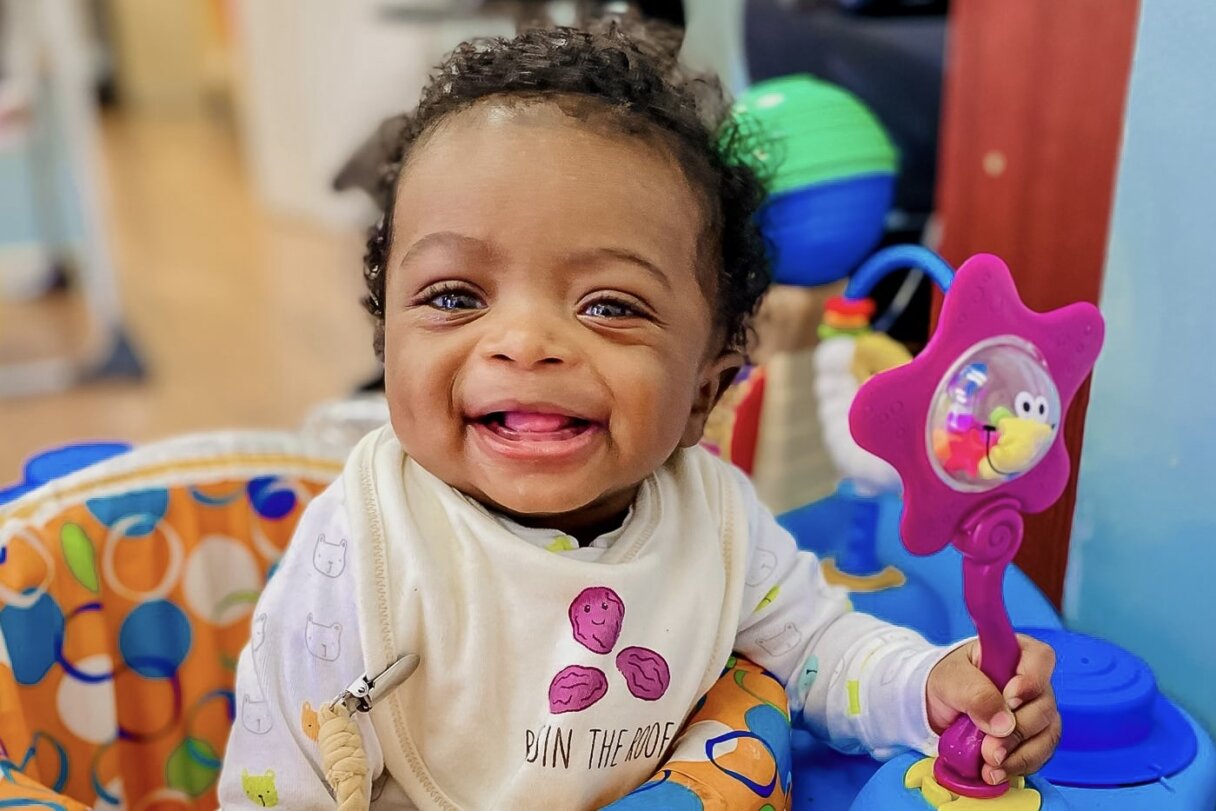
During the Transition
The First Days
What to Expect on the First Few Days, Including Potential Challenges:
- Emotional Highs and Lows: Both children and parents may exhibit a range of excited yet anxious emotions. difficulties and clinginess.
- Behavioral Changes: Be ready to face some difficulties, including minor potty-training regressions, a change in sleep patterns, or increased irritability. The latter is a normal reaction associated with change and is likely to be of a temporary nature.
- Adjusting to Change: Note that children need varying times to adjust. Some might appear adjusted from the very first day, while the process might take weeks for others.
How to Handle Goodbyes and Managing Separation Anxiety:
- Firstly, a parent should create a goodbye ritual. For example, it can be a hug, a kiss, or a high-five. The main idea is that the ritual should be short, loving, and consistent.
- In addition, parents should show that they are confident. Even if a parent has internal feelings of discomfort or anxiety in a situation, they should act positively to make the experience enjoyable for the child. However, parents must understand that remaining at the facility is vital and ensure the child is alright before leaving.
Consistent Communication
The Importance of Communicating with Daycare Staff to Monitor Your Child’s Progress and Well-Being:
- Regular communication with daycare staff helps build trust and reassures you about your child’s care and adjustment.
- Frequent updates can provide insights into how your child adapts, interacts with peers, and responds to the daycare setting.
How to Use Feedback from Staff to Further Ease the Transition:
- Act the feedback: as the ones taking care of your child, the daycare staff has a great deal of experience working with young children and can have highly beneficial advice for your child’s well-being. Do not dismiss it.
- Work through the counsels: if the staff reports an issue, talk to your child’s daycare provider and plan how you can work on your child’s problem together.
- Celebrate the progress: if you get positive feedback on how they handled a situation, share it with your child as a show of their achievement. It can help them feel more confident and comfortable in the daycare environment.
Special Considerations
Age-Specific Tips
- 4 Months: ensure that the daycare environment provides plenty of physical contact and personal attention as babies at this age need high-level care to feel secure.
- 12 Months: introduce a transitional object, such as a favorite blanket or toy, as the child will be able to allow personal things to provide their comfort in times of stress or sleep, making them feel that a piece of home is with them.
- 18 Months – 2 Years: children of this age start testing boundaries and do more exploring. Ensure the daycare staff are aware and ready to engage them in activities stimulating the child’s curiosity and offering ample opportunities for gross motor activity.
- 3 Years: engage the pressure through group activities that help a child develop the capacity to share and test the coordinative skills at this age and make the transition more fun and engaging.
Addressing Special Needs Such as Potty Training During Daycare Transition:
- Communication. Keep daycares updated on where your child is in the potty training process and maintain consistent practices at home with the daycare.
- Preparation. Prepare the daycare by providing them with supplies, such as pull-ups, wipes, and extra clothes. Additionally, gain an understanding of how daycares typically address accidents to make sure that it is not a shaming experience for the child.
- Make sure the environment is supportive. Inquire about the general approach of the daycare on potty training. Some daycares might be punitive or unsupportive in nature. A supportive, non-punitive training environment should be encouraged, as children take to potty training at their own pace.
Handling Setbacks
- Separation anxiety: It is a common occurrence, and it is natural. Reassure your child that the routine will stay. Make the goodbye ritual short and sweet. Increase the frequency of brief but approving communications when you return their toy, like a note in their lunchbox.
- Regression in behavioral milestones: It may include things like disruptions in toilet training or changes in their appetite. Stay patient and consistent. Do not dramatize the situation, and offer a gentle push in the appropriate direction
- Resistance to going to daycare: Your child may not be too eager to adjust to daycare. It is the natural course of events. Do not change the tone of the dialogue and stay consistent with your routine. With time, the script will become familiar, and with it, resistance will go down.
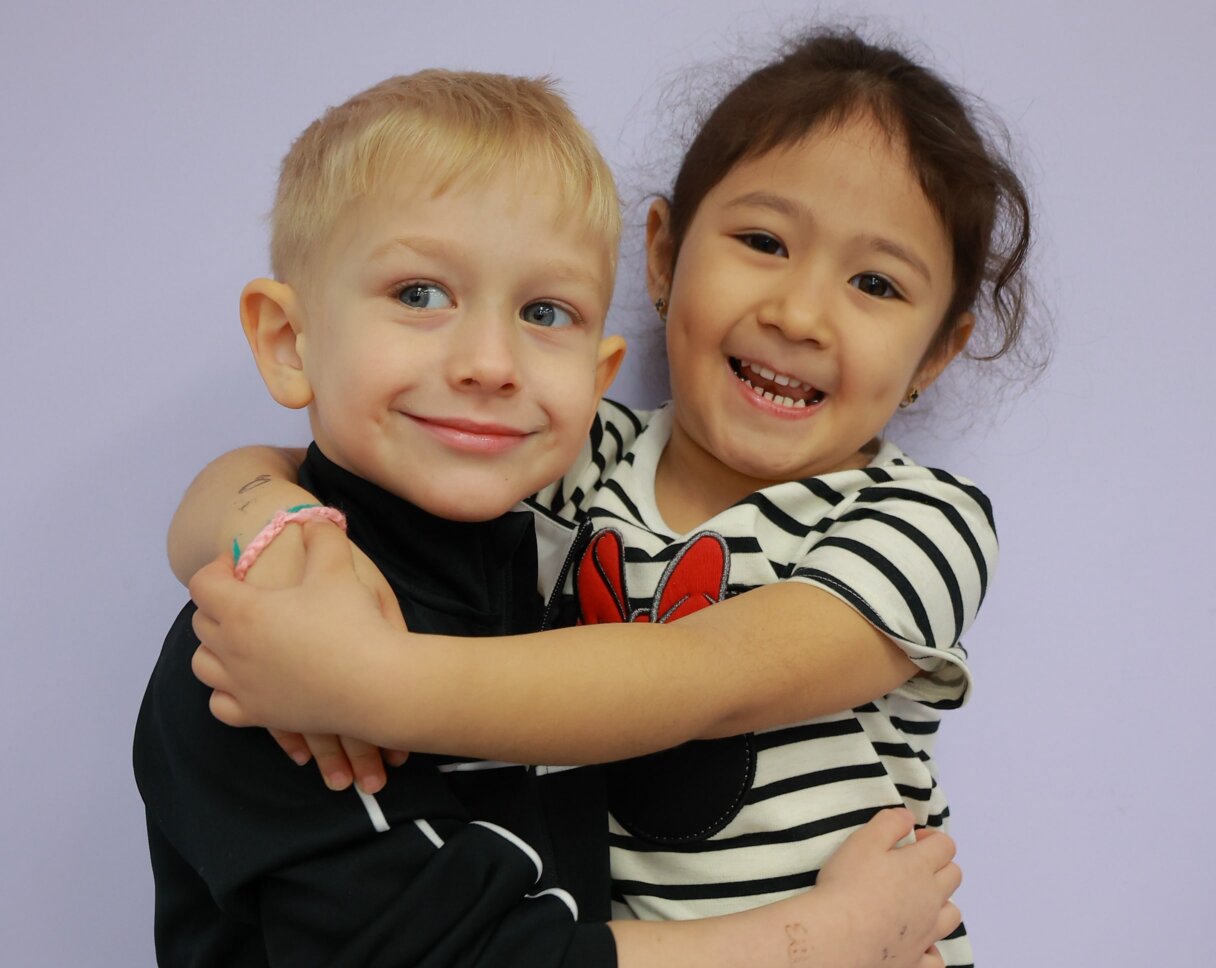
Supporting Your Child Long-Term
Reinforcement of Positive Experiences
Regularly acknowledge and celebrate new skills and behaviors your child acquires at daycare, such as making a new friend, learning a new song, or mastering a new game. This recognition boosts their self-esteem and reinforces positive feelings about daycare.
Ask your child about their day with specific questions like “What was the best thing you did today?” or “Tell me about a game you played.” This shows your child that you value their experiences and are interested in their life at daycare.
Maintain Routine Consistency
Continue to synchronize home routines with the daycare, which provides consistency, comfort, and stabilization for children. A continuous bedtime, mealtime, and playtime routine makes children feel secure and grounded.
As the child grows, they may need to move to different rooms or groups within the daycare. Parents and caregivers can prepare children for this eventuality by discussing the change in advance and, if possible, introducing the child gradually with some visits to the new room or new group leader before the shift occurs.
Building a Partnership with Daycare Providers
Establish a routine for receiving updates from caregivers, such as daily logs, weekly summaries, or informal chats at pickup and dropoff. Frequent communication will help you stay on top of your child’s progress and any areas that may need your attention.
Share information about your child’s routine and behavior, as well as any changes at home that may be influencing how they behave at the daycare. Also, take advantage of any feedback the caregiver may have about your child and how you can assist in their development.
Collaborative Approach to Development
Work with the daycare providers to determine developmental goals for your child. They can be social skills, language and physical development, etc. Thus, joint planning will guarantee that both you and the daycare share the same guidelines in your efforts to make a particular child successful.
Be a part of daycare parent meetings, event days, and other organized and coordinated activities in the daycare. This will help you both feel a partner and provide you with an understanding of the daycare’s environment and perceptions.
Supportive Involvement
Volunteering for activities or field trips is one direct way of supporting a daycare service. This will allow you to be more involved in your child’s care and help you develop closer relationships with the community.
You may possess resources or skills that could benefit the daycare – books, art supplies, or professional knowledge. Sharing these resources can help improve the environment at the daycare from an educational perspective.
Conclusion
Transitioning to daycare is a crucial moment in a child’s life. It creates opportunities for new challenges and developmental options for both a child and parents. The quality of the transition and the success in daycare for a child is affected at every step from preparation and introduction through adaptability and involvement.
Parents must remain patient and optimistic. Because all kids are different, and the time for their adjustment varies. Some might need more time to get used to the new environment. This period is paramount to their success and requires your support, understanding, and enthusiasm.
Little Scholars Daycare Difference
We are here to help you with the transition and improve the daycare experience for your child. Contact us to know how you can help your child adapt and thrive in daycare. Let your child’s early life be enjoyable and rich with Little Scholars Daycare.



